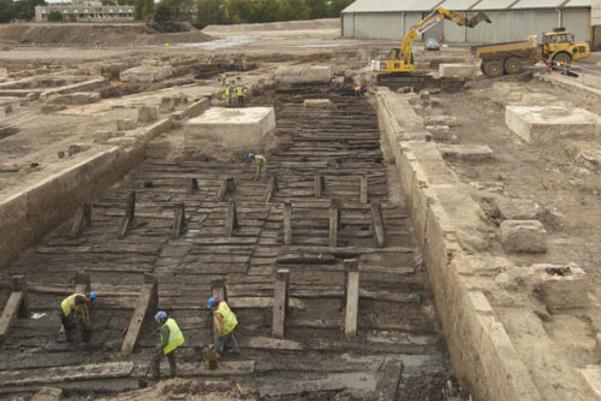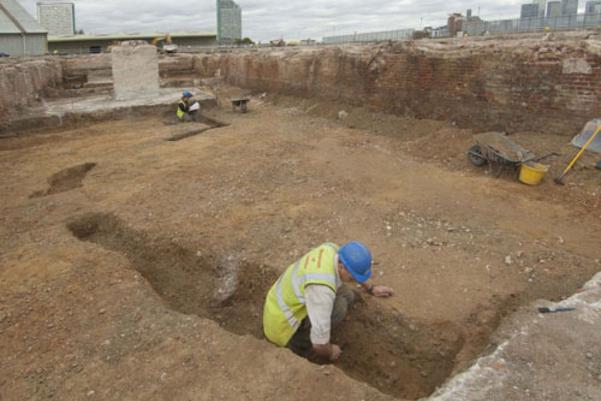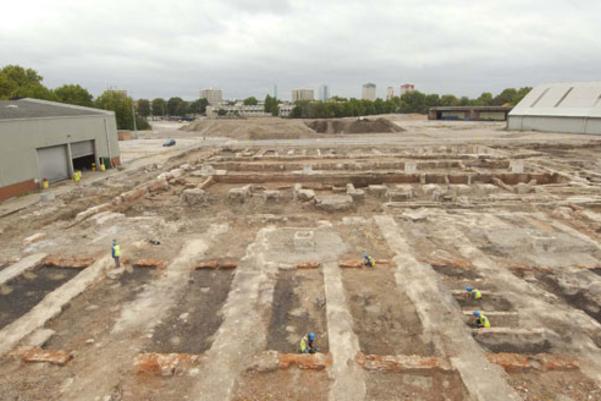Convoys Wharf: the storehouse and slipway
Excavations by Museum of London Archaeology on behalf of Convoy's Investments S.a.r.l continue at Convoys Wharf. Area 4, the latest to be investigated, covers over one hectare next to the River Thames in the heart of Deptford’s former Royal Dockyards. The main aims of this trench are to investigate the complex of warehouses which grew up around a storehouse originally constructed in 1513 and one of the dockyard’s shipbuilding slipways.
n his A Perambulation of Kent, first published in the 1570s, William Lambarde remarked that Deptford ‘was of none estimation at all until King Henrie the eight advised (for the better preservation of the Royal fleete) to erect a storehouse, and to create certaine officers there’. The Tudor storehouse was gradually absorbed into a series of other warehouses in the 17th, 18th and 19th centuries as the Dockyard developed. The excavation has shown that the ground plan of the original storehouse measured 50m long by 10m wide. The storehouse was eventually demolished in the 1950s and only its foundations survive, now protected as a Scheduled Ancient Monument.
Many of the later warehouses, particularly of the 19th century, included deep basements that removed earlier structures and archaeological deposits. However, the remains of a shallow ditch underneath one of the warehouses escaped destruction. Distinctive Samian pottery was found in the ditch, dating from the early part of the Roman period in Britain. This was probably imported from Gaul, now in modern France. There are also hints that the site was inhabited in still earlier times, with some finds of prehistoric pottery.
The west part of Area 4 is dominated by a large slipway. The slipway is shown on a map of 1868 as ‘No 5 slip’ and is built in brick, with horizontal timbers forming its base. Some of the timbers have been reused, possibly originating from vessels broken up at the Dockyard, and will provide useful information about 19th- and perhaps 18th-century ships. This slipway was only the last in a series of such structures which are represented by horizontal bracing timbers, known as land ties. Vertical timbers in the north of the slipway probably supported a later structure when the slipway went out of use in the late 19th century. A line of brick plinths either side of the walls would have supported vertical timbers for a cover building similar to the adjacent Olympia building which is Grade II Listed.
William Lambarde’s A Perambulation of Kent can be viewed online.


